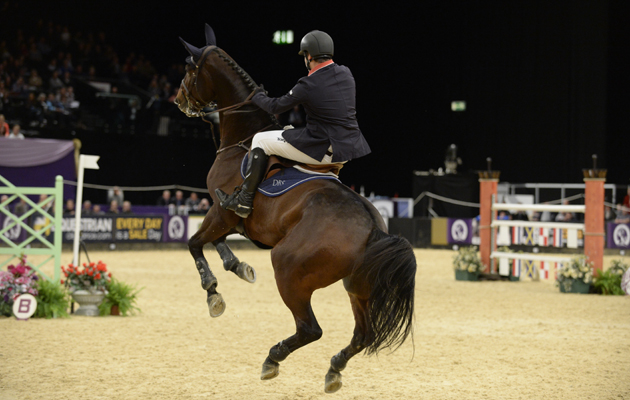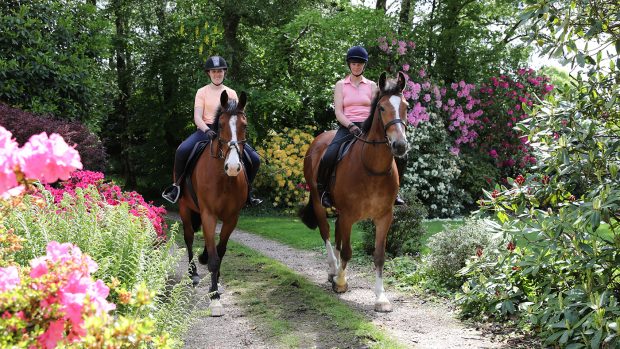Australian Horseman Jason Webb who is based in the UK and runs his online training website www.yourhorsemanship.com has a passion for starting young horses, solving equine problems and teaching riders of all abilities and ambitions develop and strengthen the partnership they have with their horses. Here Jason helps one H&H forum user who has a problem with her horse rearing
Q: “My hot-headed mare always threatens to rear before she does. Her back tenses up, she takes a few steps backwards and then goes up. When I feel her doing this what is the best thing to do to stop her? I fear just giving her a good kick would make her go up higher. She’s a mare so should I ‘ask’ her to do something else and go back to that when she has cleared her head?”
A: First of all, it is worth pointing out that hot-headed horses are easily frustrated when they are not given something to do or if they don’t understand what it is you are asking of them. They are generally not the easiest pupils I’m afraid to say, but they are extremely rewarding if you can channel their energy and teach them to relax and be secure.
Long-term, working on balance is key to sorting this problem. By this I mean her being able to travel in a rhythm with a long neck and relax. The difficulty in doing this is that when you encourage this type of horse to lengthen they tend to speed up. To rectify this requires good control of your own body, in particular staying calm and not being tipped or pulled forward. When using the rein get them to steady but relax on the contact and when they do to reward them. It is important not to hang onto them as this will cause them to go faster or get more tense under you. You shouldn’t have to kick or hold them when they get this right, they should just go along in a steady rhythm. This does take time but is key to helping you long term and I find working on a constant bend (serpentines and circles) helps a lot.
Continued below…
Related articles:
When your horse attempt to rear:
Should you find yourself in a situation where your horse is going to rear, there is a simple exercise which will help to keep you both safe and prevent the rear. The movement is known as “disengaging the hind end”, which is when you move her hind end around to the left or right. I have some videos on the Your Horsemanship website to teach your horse this exercise. The reason this movement is so effective is that it takes the horse’s engine away from them and it is very difficult for them to rear or in fact do most things that we don’t want them to do when applied! Teaching your horse to disengage the hind end is key to you being able to safely manage rearing but then to get a long term “fix”, work on their balance.
How to disengage the hind end:
To move your horse’s hind end it is best to bend them using just your left or just your right rein in order to bend your horses neck (use the rein independently of the other rein). Back up your rein aid by using your body and turning in the saddle and specify your inside aids to push the rest of your horse’s body through creating this movement.
A good time to practice this is when you ask her to stand. Busy or rearing horses don’t tend to do this very well and want to move off before you ask them. The rider then generally pulls back to stop them and they threaten to go up. So once you get her to stand, relax your reins to reward her and if she marches off then don’t pull her but disengage her to correct the movement. You may find yourself going around in circles but this is not your choice, it is theirs and pretty soon they are going to realise their idea of marching off isn’t that great and that your option of standing still is much easier. Use one direction at a time but alternate after each time they stand. Doing this is also teaching your horse the habit of bending when they are tense and bothered.
If you were to pull on both reins to get them to stand you will find their head will elevate and they will lighten in front and start to rear. What other options do they have?
In summary, spend a lot of time working in a longer frame with good rhythm and teach them to stand and switch off, better known as patience!
Hope this helps and good luck.
Jason
Visit Equo Events to find out more and to attend and take part in Jason’s Your Horsemanship clinics




